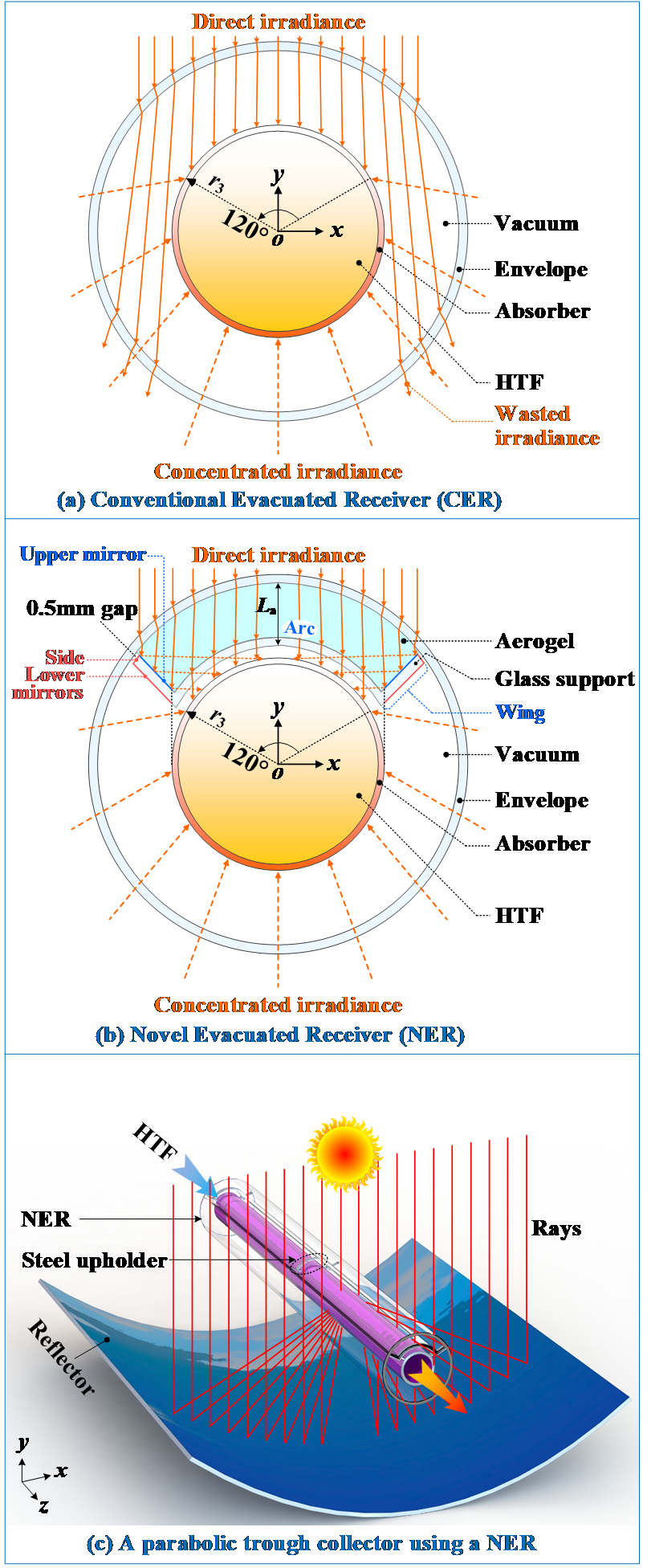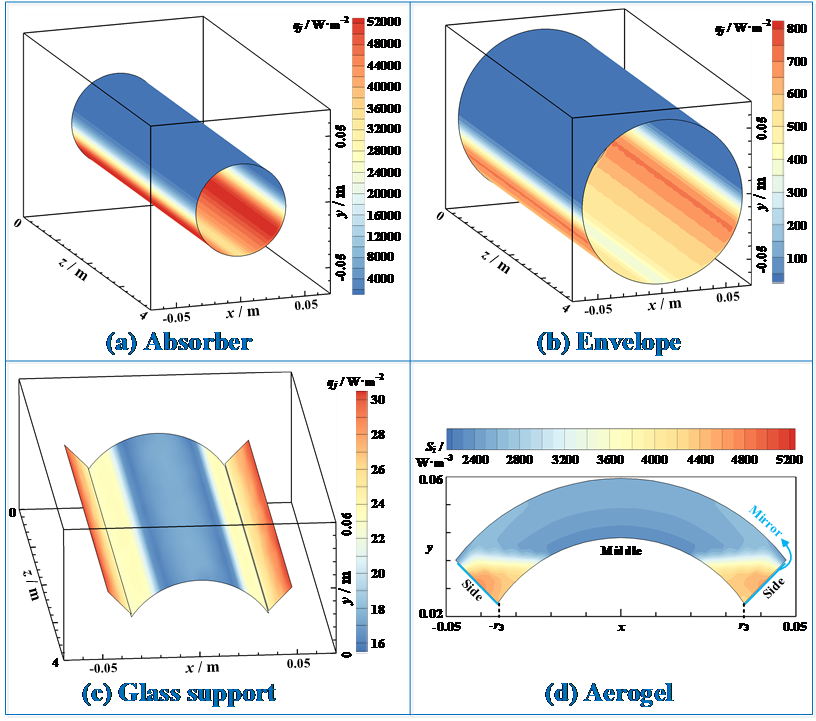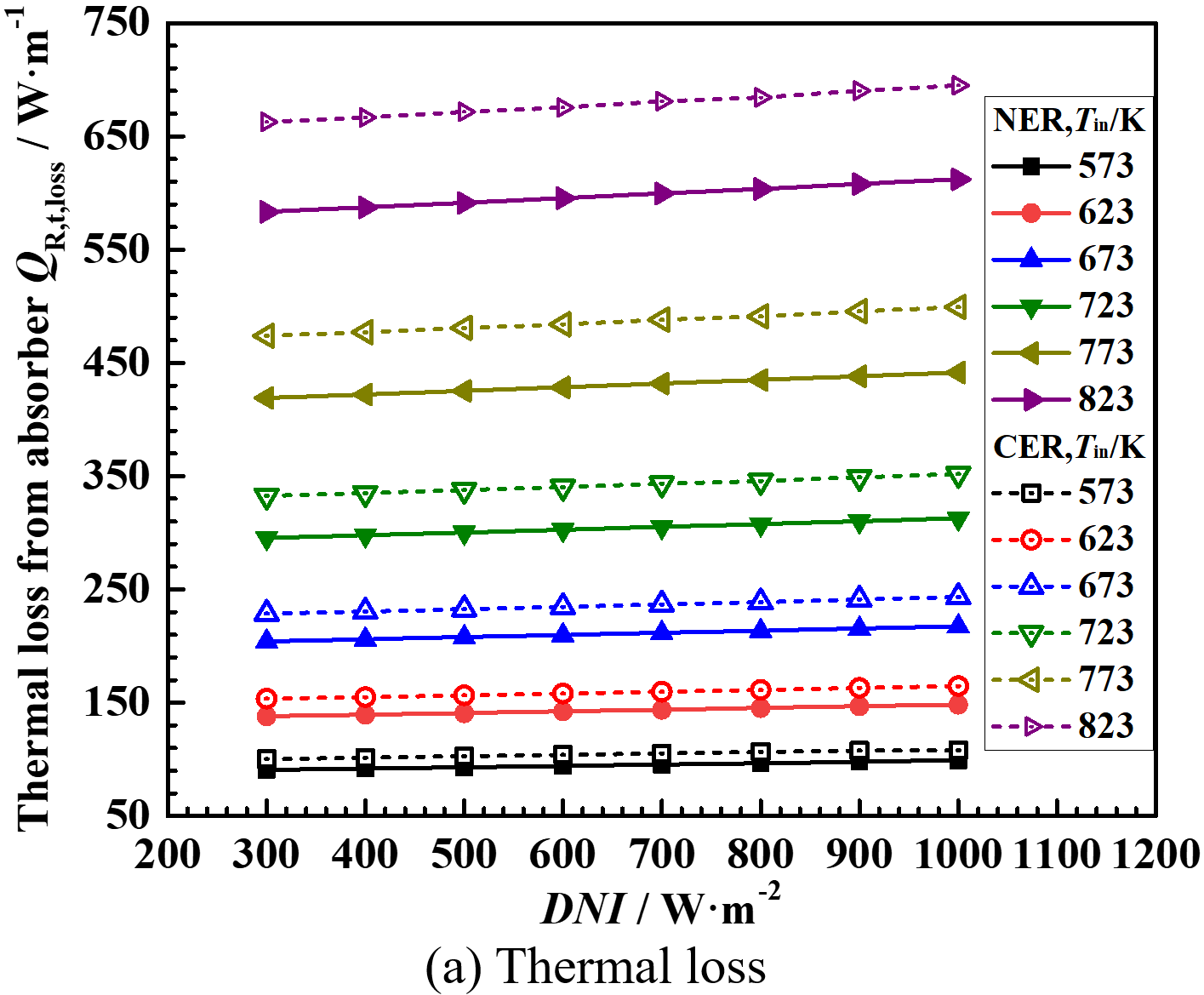2020-09-12:AEii国际应用能源报道:【Applied Energy最新原创论文】一种以透明气凝胶和翼状聚光镜提升效率的新型槽式太阳能吸热器
发布时间:2020-09-12
点击次数:
原始链接:https://mp.weixin.qq.com/s/6_PC6gT7nUMytFa_R8F9Dg
Highlights
(1) A trough receiver using a transparent aerogel and wing-like mirrors is proposed
(2) Optical loss of the receiver can be reduced by 1.5% by the novel receiver.
(3) Heat loss of the absorber can be reduced by 12.0% at fluid temperature of 823K.
(4) The maximum improvement in the receiver efficiency of 5.04% is achieved.
(5) The maximum improvement in the collector efficiency of 4.74% is achieved.
摘要
槽式太阳能吸热器的效率直接影响槽式光热电站的光电转换性能。研究表明,在投资成本不变的情况下,吸热器效率每提升1%就可将电站发电量提升0.9-1.4%。鉴于此,为进一步提升槽式吸热器效率,本文提出了一种具有透明气凝胶隔热结构和翼状聚光结构的新型槽式吸热器。在设计中,一方面将弧形的透明气凝胶局部填充在吸热器顶部的阳光直射真空区内,以减少吸热管的热损失;另一方面,在支撑气凝胶的玻璃结构上设计了具有特殊倾角的翼状聚光镜,以捕获传统吸热器所浪费的部分光能。在此基础上,采用光线追迹法和计算流体动力学方法对吸热器在实际工作条件下的光热性能进行了分析,并优化获得了在任意阳光法向直射辐照度(DNI)和工质入口温度(Tin)下都可提升吸热器效率的最优新型吸热器。对所获得的最优吸热器的综合分析表明,在DNI为300-1000 W·m-2、Tin为573-823 K的典型运行工况下,与传统吸热器相比,最优新型吸热器可将吸热器效率提升0.32-5.04个百分点。上述结果表明,本文所提出的新型吸热器可为提升槽式光热发电技术的光电转换性能提供帮助,并为业界的技术发展提供参考。
Abstract
In this paper, a novel evacuated receiver was proposed to improve the efficiency of the parabolic trough collector. In this receiver, a solar-transparent aerogel supported by a glass support was employed to insulate the absorber in the directly illumined vacuum zone, and wing-like mirrors on the support were designed to collect some irradiance wasted in the conventional receiver. An optical model developed using ray tracing and a heat transfer model developed using computational fluid dynamics were employed to study the receiver performance. Firstly, optical study indicates the receiver optical efficiency first increases then decreases with increasing aerogel thickness due to the combined effects of the aerogel and the mirrors. The peak receiver optical efficiency of 89.56% is achieved when the aerogel thickness is 20 mm. Moreover, thermal study indicates the receiver thermal efficiency just monotonically increases with increasing aerogel thickness before the aerogel touches the absorber. Then, the receiver with the aerogel thickness of 20 mm was selected as the suggested design after considering both the efficiencies and the safety requirements. Finally, performance evaluation of the suggested receiver indicates it can improve the receiver efficiency at any direct normal irradiance or fluid temperature compared with the conventional receiver. It is found the receiver efficiency can be improved by 0.32-5.04% under the typical direct normal irradiance of 300-1000 W·m-2 and the inlet fluid temperature of 573-823 K. Results from present study are beneficial for improving the performance of the parabolic trough collector.
Keywords
Novel evacuated receiver
Improving efficiency
Parabolic trough collector
Transparent aerogel
Wing-like mirror

Fig. 1 Sketches of the CER and NER.

Fig. 2 Typical solar heat fluxes within the NER when the aerogel thickness is 20 mm, where DNI=1000 W·m-2.

Fig. 3 Optical performance of the receiver at different aerogel thickness, where DNI=1000 W·m-2.


Fig. 4 Thermal performance of the optimal NER and the CER under various DNIs and Tin.
